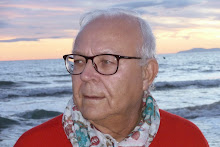Antonio Campillo Ruiz
Lena Gieseke, nacida en Osnabrück, Alemania, es la genial creadora de esta fantasía que, mediante las grandes posibilidades técnicas que posee la infografía, nos traslada a un mundo cuasi tridimensional ya que solo podemos proyectarla en una pantalla bidimensional. Sería tridimensional en su totalidad si se proyectase en el espacio.
De cualquier forma, la sensación de lo denominado tridimensional, en la proyección bidimensional, es tan conocida para nuestro cerebro que aseveramos con firmeza: la creación infográfica es 3D. Denominación que día a día se enraíza más fuertemente en la denominación cotidiana en este siglo XXI que, sin duda, vivirá la proyección tridimensional espacial en su totalidad.
Desmenuzar en trozos y poder girarlos, cambiarlos de posición, estudiar pormenorizadamente aspectos “no visibles” del cuadro “Guernica” de Pablo Ruiz Picasso, ha debido ser una empresa que habrá requerido tres grandes aspectos: un gran estudio de la pintura, las características técnicas y posibilidades del software empleado y una gran capacidad artística para imprimir movilidad, con una velocidad adecuada y una música que complementase la realización. Un trabajo excepcional.
Expongo a continuación los motivos y características que han motivado la obra realizada escritos por su autora y, posteriormente, podemos apreciar esta pequeña gran joya de la técnica y la imaginación. Aquellos lectores interesados, pueden consultar aspectos importantes sobre los datos biográficos de la autora e interpretes de la música, española por supuesto.
The idea of creating a 3D version of an influential artwork came out of doing jigsaw puzzles of famous paintings. When you assemble a jigsaw, you study a painting in great detail and you become aware of the very lines, shapes and colors that the painting is composed of and how these elements merge to create a unified expression. Through the puzzle, you explore the artwork, examining details your eye might not have caught otherwise. Your experience of the painting is intense, aroused by the action of puzzling, but expanded and strengthened by your own fantasy.
The idea of creating a 3D version of an influential artwork came out of doing jigsaw puzzles of famous paintings. When you assemble a jigsaw, you study a painting in great detail and you become aware of the very lines, shapes and colors that the painting is composed of and how these elements merge to create a unified expression. Through the puzzle, you explore the artwork, examining details your eye might not have caught otherwise. Your experience of the painting is intense, aroused by the action of puzzling, but expanded and strengthened by your own fantasy.
This 3D rendering of Picasso's Guernica offers a similar experience. The actual spatial immersion into a painting is a powerful way to prompt contemplation of its many facets. My project is not only a creative piece of work on its own; it stands in a larger context. It provides the unusual opportunity to view the painting from a unique perspective, revealing aspects that would normally stay hidden from the casual viewer. When we discern the original painting in this three-dimensional reproduction, we recognize which features most significantly constitute the painting. Consequently this three-dimensional exploration of Picasso's Guernica is an innovative technique for comprehending and appreciating the original masterpiece.
My primary intention for the project was to create a provoking and deep contemplation of Pablo Picasso’s Guernica. Is my model a true reconstruction of the Picasso’s painting, or is it merely a rough re-visualization? Is it still Picasso’s art or has it, through my addition of third dimension, become something completely different? It is not my place to answer those questions nor to determine the relationship between my three-dimensional reproduction and the original painting. Perhaps this is a question best left in the hands of critics.
| Created by After growing up in |
| Cello Christopher Johns recently completed a Masters degree in cello performance at the University of Georgia, while studying with David Starkweather. He served as a Graduate Assistant Director of the UGA Summer Music Camps, President of the Student Chapter of the American String Teachers Association, and as a cellist in the UGA Symphony and ARCO Chamber Orchestras, which performed in Carnegie Hall November of 2004. Johns began studying cello at the age of four under the instruction of Jennifer Frisina in Charlotte, NC. (...more) |
| Guitar Born in |
Nana by Manuel de Falla
The song Nana is part of Manuel de Falla’s Siete canciones populares españolas, arranged by Ana Ruth Bermúdez and Rene Izquierdo for cello and guitar. De Falla wrote the suite 1908 -Spain London
Performed by
Christopher Johns — Cello
Matthew Anderson — Guitar






















.jpg)








.svg.png)









































































--3.jpg)


.jpg)















No hay comentarios:
Publicar un comentario